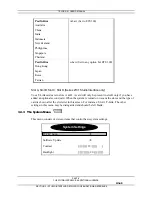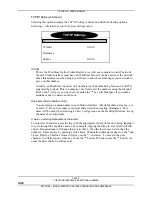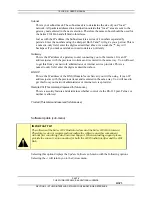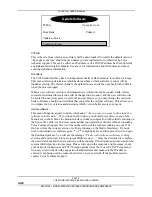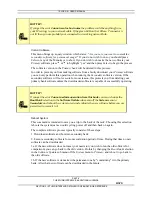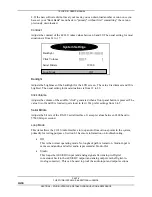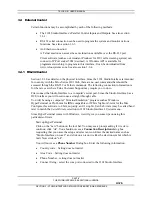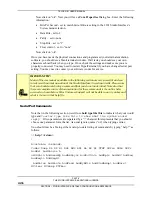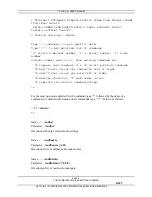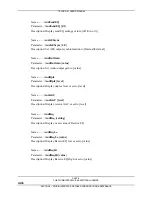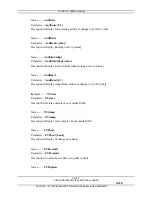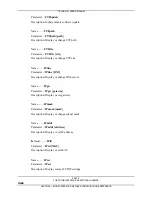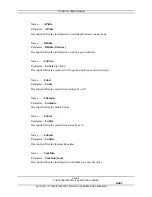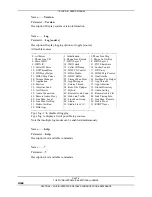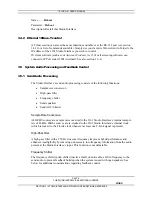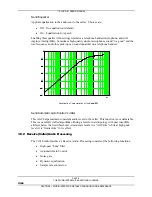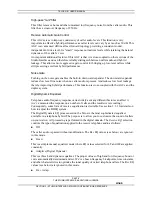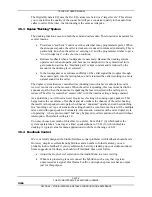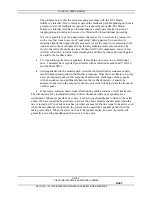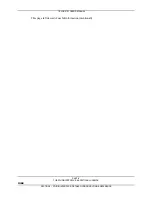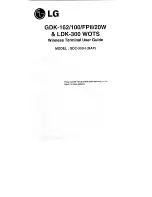
TELOS 2101 USER’S MANUAL
PART IV
THE STUDIO INTERFACE & ADDITIONAL HYBRIDS
IV-83
SECTION 3 – STUDIO INTERFACE: DETAILED CONFIGURATION & REFERENCE
Name.......: Reboot
Parameter..: Reboot
Description: Restart this Studio Interface
3.4.2
Ethernet 10Base-T control
A Telnet session can access the same functions available over the RS-232 port (see section
3.4.1 for a list of commands available). Simply use your favorite Telnet client to Telnet to the
IP address of the 2101 Studio Interface you wish to control.
Or client software (such as our Assistant Producer for 2101 call screening software) can
connect to IP Port socket 5001 (decimal). See also section 1.6.4.
3.5
System Audio Processing and Feedback Control
3.5.1
Send Audio Processing
The Studio Interface’s send audio processing consists of the following functions:
•
Sample rate conversion
•
High-pass filter
•
Frequency shifter
•
Send equalizer
•
Send AGC/Limiter
Sample Rate Conversion
AES/EBU sources are sample rate converted to the 2101 Studio Interface’s internal sample
rate of 48kHz. 48Khz sources are re-clocked to the 2101 Studio Interface’s internal clock
(which is locked to the T-Link clock whenever at least one T-Link signal is present).
High-Pass filter
A high pass filter with a 250 Hz crossover frequency improves hybrid performance and
enhances intelligibility by removing unnecessary low-frequency information from the audio
present at the Studio Interface’s input. This function is not defeatable.
Frequency Shifter
The frequency shifter (pitch shifter) inserts a small, unnoticeable, shift in frequency to the
send audio to prevent feedback buildup when the system is used with open speakers. See
below for additional considerations regarding feedback control.

